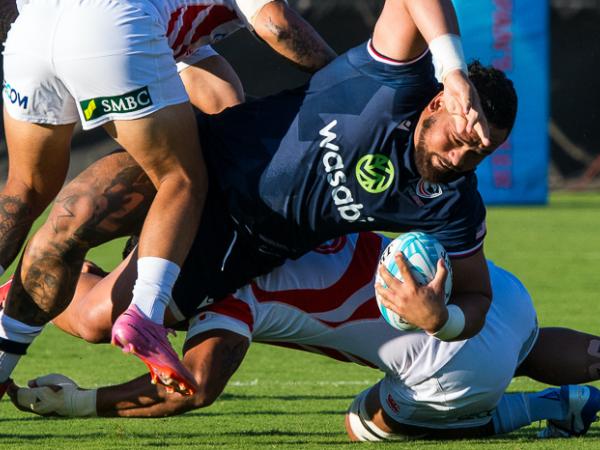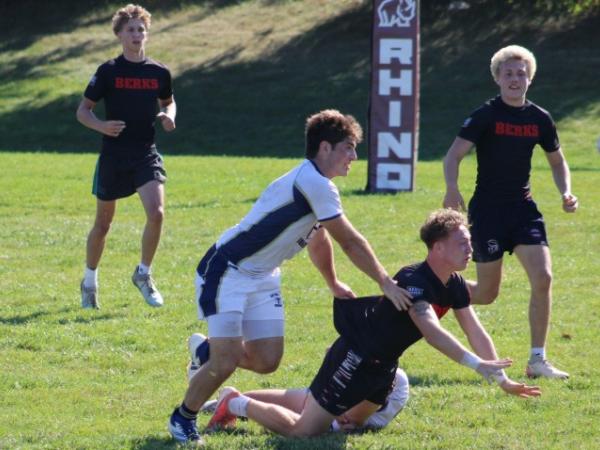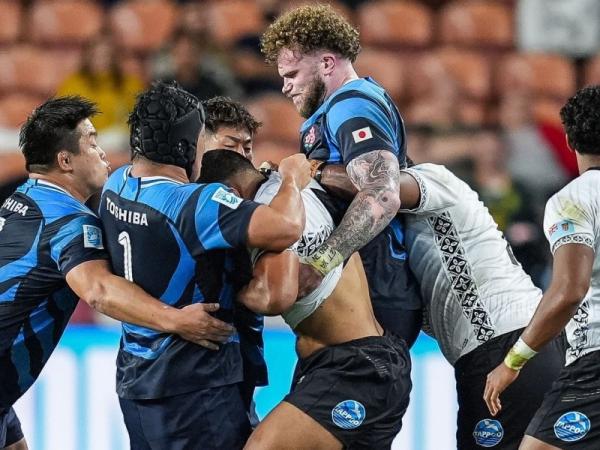American collegiate rugby has split up into very specific tiers and because of that it’s easy to get caught up in the idea that all the potential high performance players are in the highest divisions.
But that’s certainly not the case; witness our latest example, Ray Santiago.
Santiago plays lock and No. 8 for RPI in Liberty’s Division II. It’s not the highest-profile team nor the highest-profile league, but even so he’s someone to keep a close eye on. Strong, powerful, 6-5, 250, he is the ideal profile of a good lock forward. He has expanded his rugby horizons, finding tougher competition and playing experiences, and performed well in them, which is why we’re shining a bit more of a spotlight on him.
After a strong season for RPI in the fall of 2022, Santiago played in the Collegiate Shield and showed well there. He backed that up by playing with the Atlantic Coast All-Stars in the WURIT
Atlantic Coast All-Star Team Finalized for WURIT
Then came an excellent season for RPI and a really good showing for the Tri-State Foundry in the NCR All-Star championship. Every time, Santiago has not only shown up, but shone.
A Civil Engineering major at the very demanding Rensselaer Polytechnic Institute, Santiago found rugby his freshman year. He was a wrestler and soccer player for eight years, and didn’t have plans to play a serious sport at college.
“Originally I came to school to focus on my education,” Santiago told GRR. “But I soon felt I was missing something.”
As is often the case, a buddy opened the door to rugby for Santiago. Come on out and try it, he said. Ray did, and kept going.
Top D2 Players of the Fall: No. 8
Top D2 Players of the Fall: Flanker
Top D2 Players of the Fall: Lock
Top D2 Players of the Fall: Front Row
Top D2 Players of the Fall: Wing and Fullback
Top D2 Players of the Fall: Center
Top D2 Players of the Fall: Flyhalf
Top D2 Players of the Fall: Scrumhalf
“Pretty soon I was trying hard to get better and to learn more about the sport and understand it,” Santiago explained. “Sports generally came naturally to me but rugby was challenging. It was a challenge to learn it and I just decided, ‘I am going to get this done.’”
He set the task for himself to learn the referees’ calls and what happens when certain things goon during the game.
“Being a wrestler there were some things that came fairly naturally but I had to rely on my older teammates about some of the wrestling moves I couldn’t do,” he added.
But he embraced it and soon became a useful and versatile member of the RPI team—a bit tall for prop he nonetheless learned how to do that and suited up at prop on occasion. He played flanker and lock, and this year moved to No. 8 because then he could get the ball in his hands more often.
“I love No. 8,” he said. “I can do a lot of things from there.”






















